| Image | Plant | Status | Notes | Events |
|---|---|---|---|---|
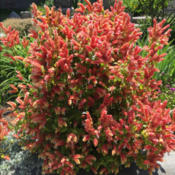 |
Shrimp Plant (Justicia brandegeeana) |
Have |
||
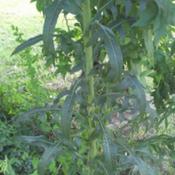 |
Wild Lettuce (Lactuca canadensis) |
Have Medicinal Native Plant Edible |
This specimen is around 10' tall so far, without any fertilizer of any sort. The top is high into the limbs of the sweetgum tree as of late June, so it will likely grow taller. | |
 |
Bleeding Hearts (Lamprocapnos) |
Want (Love to have) |
||
 |
Kangaroo Paw Fern (Lecanopteris pustulata subsp. pustulata) |
Have Tender/Not Cold Hardy |
I bought two pots in very poor shape on clearance for $2 each. Watered daily with no improvement, so placed them in deep saucers to "keep their feet wet." Then they began sprouting leaves like crazy! Supposedly cold tolerant from 25°F to 30°F, but mine suffered drastically with only a very light frost and lost all their leaves. I have them inside, hoping to once again revive them, but so far, after over three months, they show little promise. Many of the rhizomes appear dead, with a few still green, so I'm hoping a few rhizomes will pull through and leaf out once more. I won't trust them to even a chance of frost in the future. Perhaps the lower temperature tolerance applies to plants in the ground and not in pots. Live and learn. (Or is that "kill and learn"?) :( | |
 |
Tiger Lily (Lilium lancifolium) |
Have |
Tiger Lilies are very hardy plants and will endure much neglect. | |
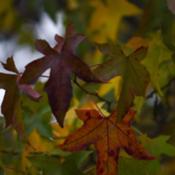 |
American Sweetgum (Liquidambar styraciflua) |
Have Native Plant |
||
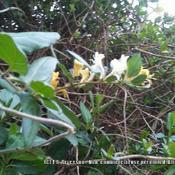 |
Honeysuckles (Lonicera) |
Have Invasive (or Potentially) Favorite/Butterflies Native Plant Favorite/Bees Favorite/Hummingbirds Favorite/Birds |
||
 |
Honeysuckle (Lonicera periclymenum) |
Have Invasive (or Potentially) Favorite/Butterflies Native Plant Favorite/Bees Favorite/Hummingbirds Favorite/Birds |
The nectar can be extracted by removing the flower and pinching the green base off, being careful to avoid breaking the stamen, which can then be gently pulled back through the tube of the flower like a piston, collecting the necter in a tiny drop that appears at the flower's base. This is quickly brought to the tongue, a hard-won but delightful treat for children. White flowers turn yellow as they age, then fall off the vine. Red berries, slightly toxic to humans, are favored by birds. |
February 12, 2019: Bloomed (Observed a branch of blooms already, some several days old--old enough to have already turned yellow. I was surprised to see them so early.) |
 |
Coral Honeysuckle (Lonicera sempervirens) |
Want (Love to have)Favorite/Hummingbirds Favorite/Birds Native Plant Favorite/Butterflies |
||
 |
Creeping Jenny (Lysimachia nummularia 'Goldilocks') |
Have |
||
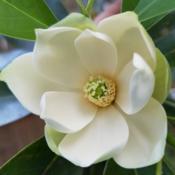 |
Sweet Bay Magnolia (Magnolia virginiana) |
Want (Love to have)Edible/Spice Native Plant |
||
 |
Japanese Hardy Banana (Musa basjoo) |
Have |
||
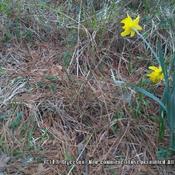 |
Daffodils (Narcissus) |
Have Favorite/Butterflies Wild/Non-Native/Naturalized Favorite/Bees |
||
 |
Paperwhites (Narcissus 'Ziva') |
Have Favorite/Bees Wild/Non-Native/Naturalized |
||
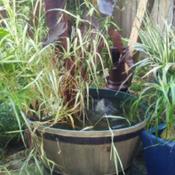 |
Ribbon Grass (Phalaris arundinacea 'Strawberries & Cream') |
Have Marginal/Bog |
||
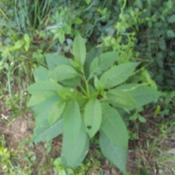 |
Pokeweed (Phytolacca americana) |
Have Edible Native Plant Favorite/Birds |
"Poke Salad" leaves are edible but potentially poisonous if not cooked properly. Berries poisonous to humans, but favored by birds. Berries can be used to make ink or dye. | |
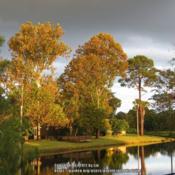 |
American Sycamore (Platanus occidentalis) |
Have Favorite/Butterflies Favorite/Bees Native Plant Favorite/Birds |
||
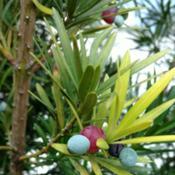 |
Buddhist Pine (Podocarpus macrophyllus) |
Have |
Cold tolerant from 10°F to 20°F. | |
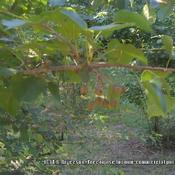 |
Callery Pear (Pyrus calleryana) |
Have Invasive (or Potentially) Wild/Non-Native/Naturalized |
I discovered a few of these young trees growing on the plot I have planned for my garden and left them, recognizing them as some sort of fruit tree and thinking they were something I wanted to keep. Now that I know what they really are, I will be cutting the extremely thorny nuisances down to the ground and eliminating them. I've never been fond of "Bradford Pears" (which is a cultivar of Pyrus calleryana), and if I'm going to have a tree in my garden, it will either bear fruit or nuts, be a good, long-lived shade tree that provides for nature's creatures (as in food or habitat), bear beautiful, pleasantly fragrant blooms, stunning spring or fall color, or at least have a unique, visually impactful form. This is an Asian arborial weed! | |
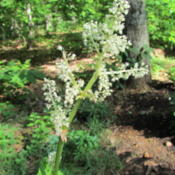 |
Ornamental Rhubarb (Rheum palmatum) |
Want (Absolute must-have)Medicinal |